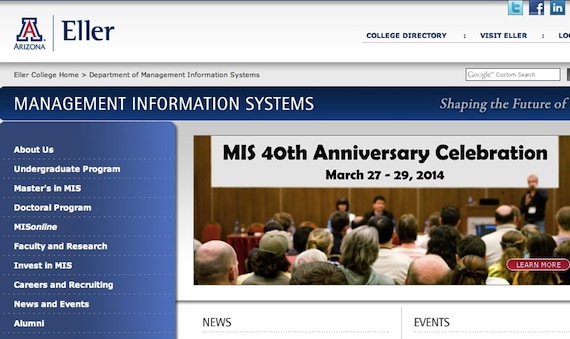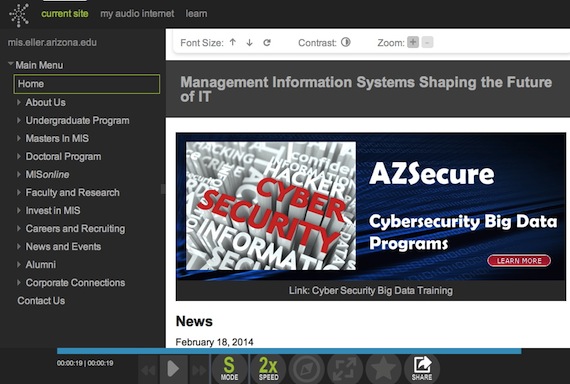U Arizona Boosts Site Accessibility with Audio Internet
One academic department at the University of Arizona is boosting Web accessibility for its students by providing audio navigation tools on its site.
UA's Department of Management Information Systems, which operates out of the Eller College of Management, has adopted Audio Internet Platform 5.0, a cloud-based tool from AudioEye that analyzes site content, normalizes it and then reads information aloud to visitors. It also provides related navigational tools, such as pause and skip, arrow-based navigation, audio prompts for navigation (such as "This carousel contains X items, press left or right to scroll through them")and optional reader display mode.


The UA MIS site before applying Audio Internet (top) and after |
According to AudioEye CEO Nathaniel Bradley, "We are currently incorporating this technology deployment in over 25 educational facility websites that will be 'turning up' the Audio Internet 5.0 product line in coming days. It is appropriate that we are launching our first 5.0 deployment with UofA MIS, with which we have enjoyed a rewarding partnership with technological and economic impacts. It is exciting for all of us at AudioEye to bring these progressive and successive accomplishments to reality."